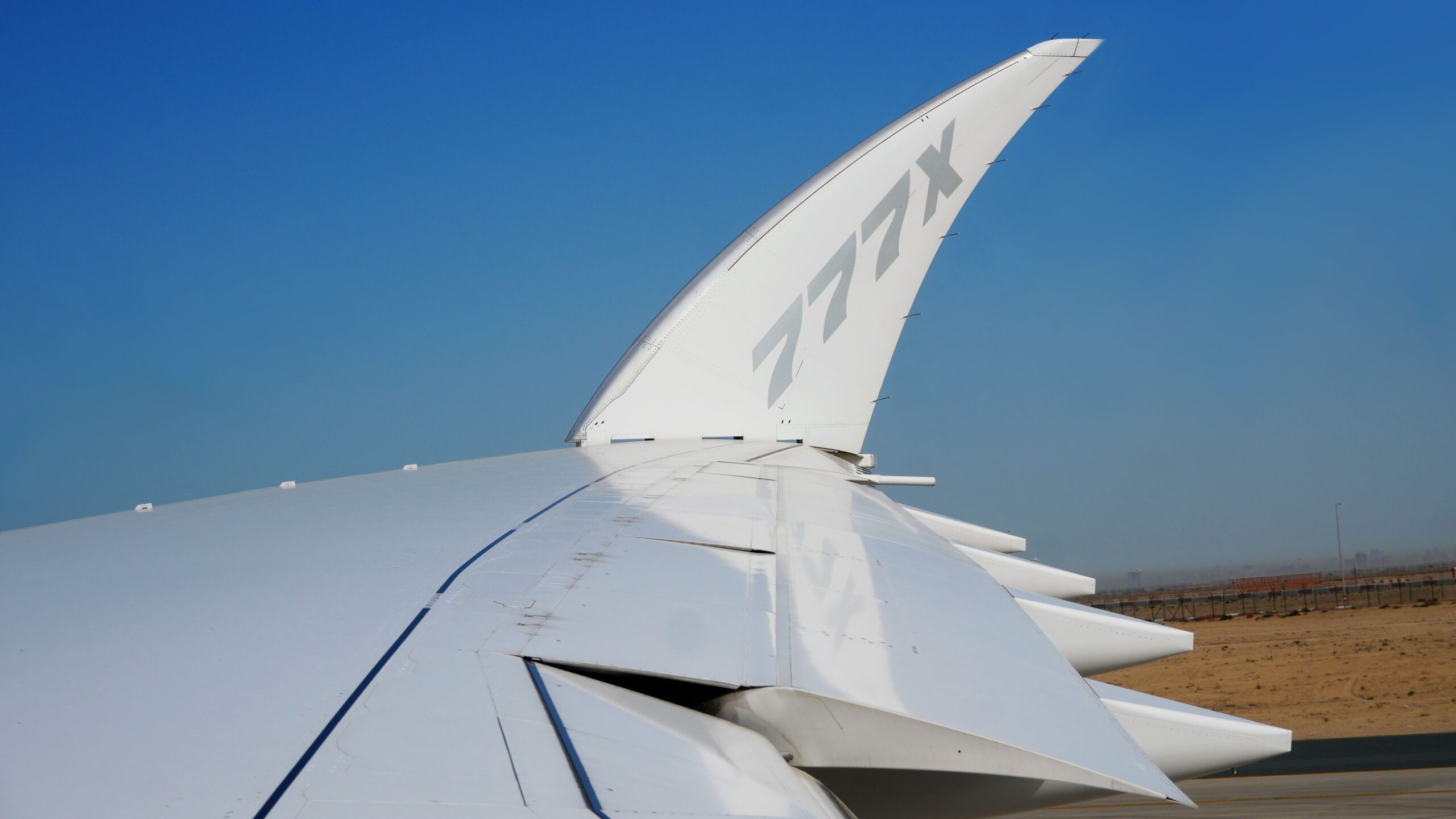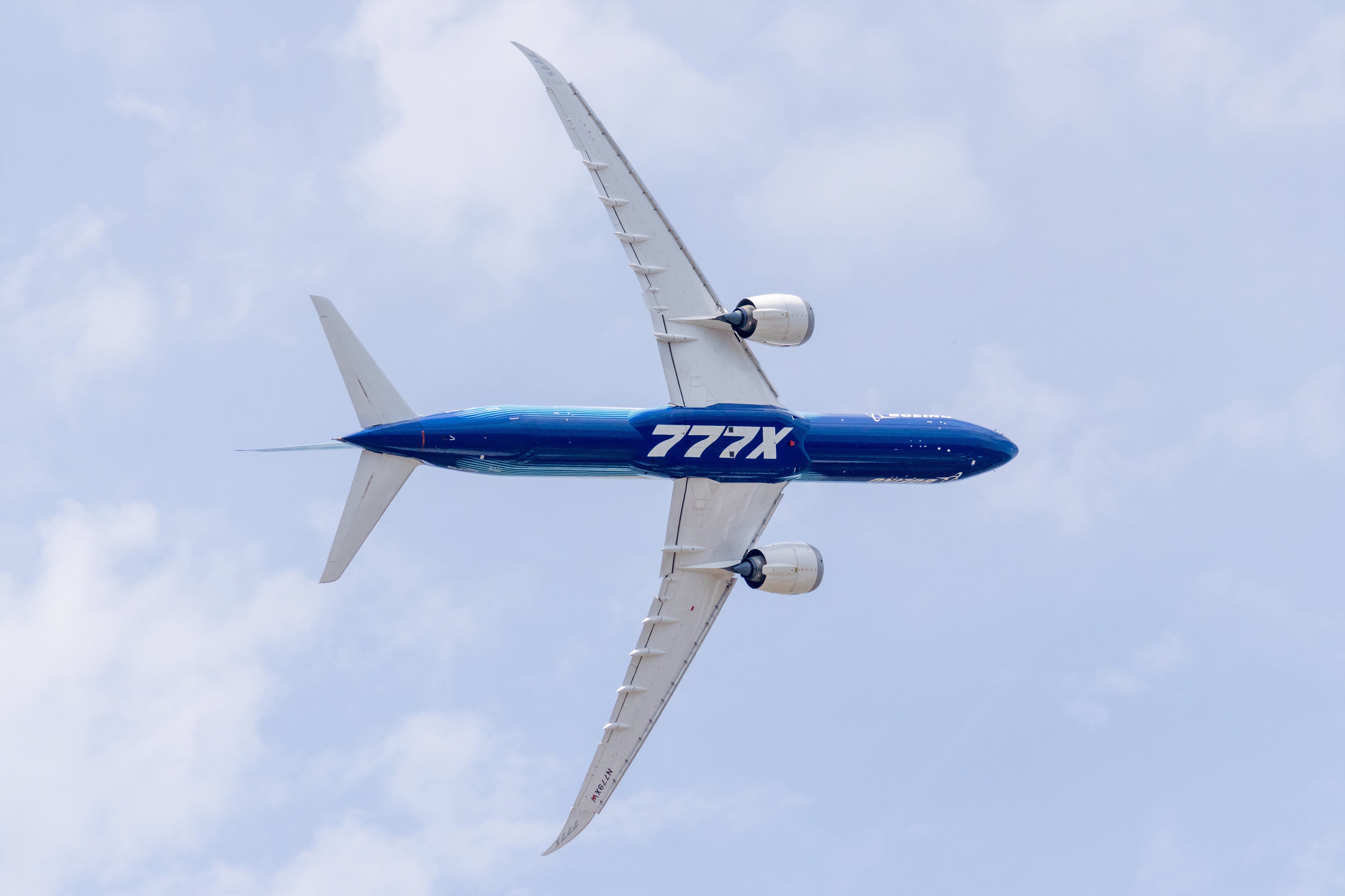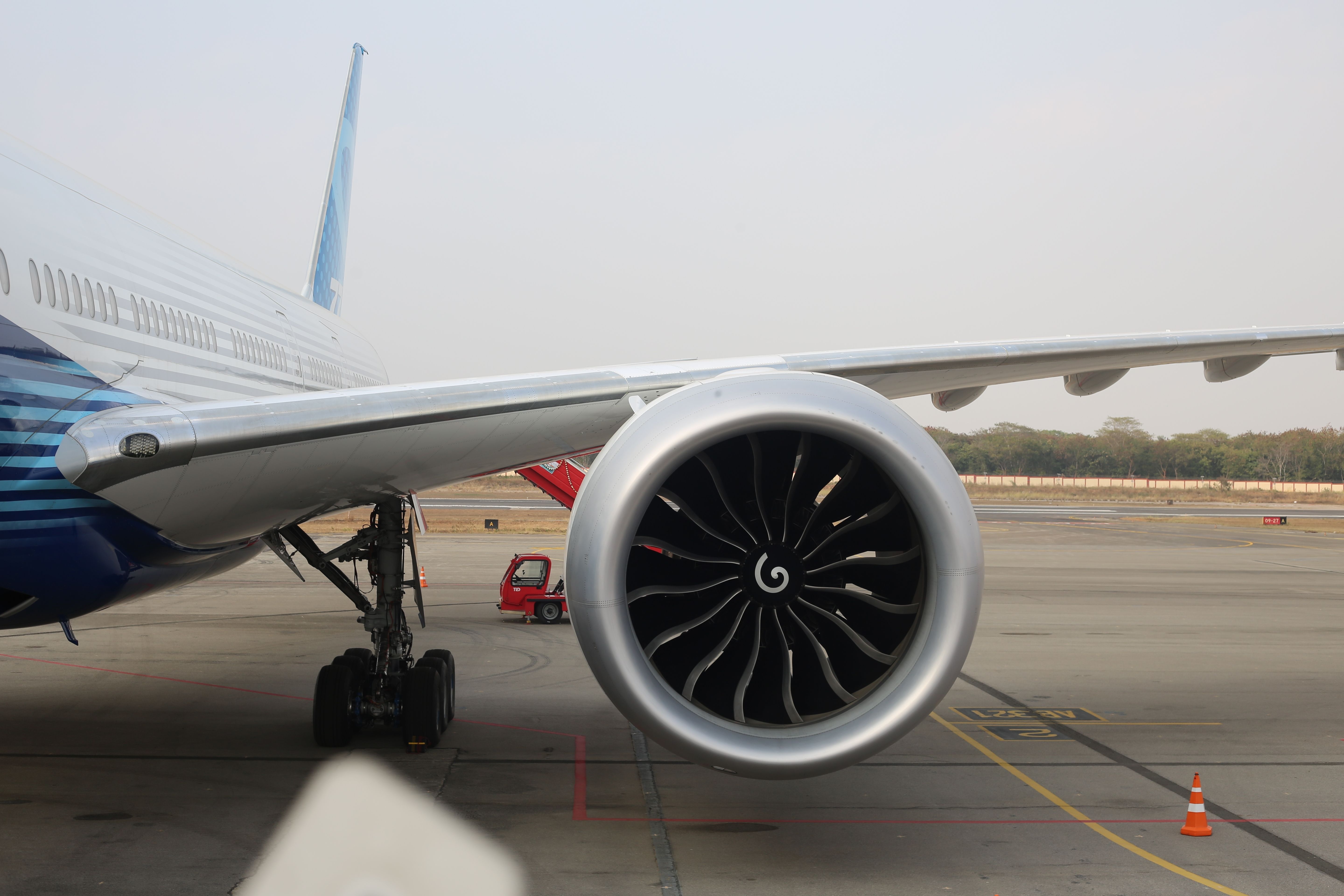Summary
- Boeing has discovered cracks on the thrust links on the fourth 777X flight test aircraft, registered as N779XZ.
- The first severed and subsequent cracked thrust links were found a few days ago.
- It has remained unclear whether this will affect the delivery date of the first Boeing 777X aircraft.
![]() Boeing
Boeing
has found that the fourth 777X test aircraft, which has stayed dormant since at least November 2021, has cracked thrust links, a problem that has affected the whole 777X test fleet.
Affecting another 777X test aircraft
According to a report by Aviation Week, citing sources familiar with the matter, cracks were found in at least one of the two thrust links on one of the engines of a
777X
registered as N779XZ.
The sources also told the publication that Boeing has been communicating with customers about the problem and that the manufacturer has been unable to determine the source of the cracks.
Photo: Tom Boon | Simple Flying
However, N779XZ has not flown since November 18, 2021, when Boeing ferried the widebody jet from Seattle Boeing Field (BFI) to Seattle Paine Field International Airport (PAE), which was then known simply as Paine Field.
Severed thrust links
On August 19, The Air Current first reported that Boeing has suspended the 777X flight testing program after it had found that one of two thrust links on an engine of the 777X, registered as N779XY, was severed.
Further inspections revealed cracks on other 777X test aircraft, including N779XW, N779XX, and the aforementioned N779XZ.
Photo: Aerospace Trek | Shutterstock
In a statement to Simple Flying on August 20, Boeing confirmed the development, stating that during scheduled maintenance, the company identified a component that did not perform as designed.
“Our team is replacing the part and capturing any learnings from the component and will resume flight testing when ready.”
At the time, Boeing explained that the part was a structural component between the aircraft and the engine structure, with the thrust links being custom-made for the 777-9.
Furthermore, the aircraft manufacturer stated that it was conducting inspections of the flight test fleet for cracked or severed thrust links, noting that no flight tests were planned on the other 777Xs since they have been undergoing maintenance and “layup activities.”
Boeing added that it has been talking with the Federal Aviation Administration (FAA) and its airline customers, noting that each 777-9 engine has two thrust links, meaning that there was redundancy.
Another setback?
However, then and when Simple Flying approached Boeing for a comment on August 29, the company did not say whether the thrust link issues would delay the 777X’s entry-into-service (EIS) date.
The company’s spokesperson reiterated that Boeing will resume flight testing “when ready.”
During the company’s Q2 earnings call on July 31, Brian West, the chief financial officer (CFO) and executive vice president of finance of Boeing, only mentioned that while the type inspection authorization (TIA) was a very important milestone for the 777X, Boeing will continue following the lead of the FAA.
West added that the company expected to deliver the first 777X in 2025.



